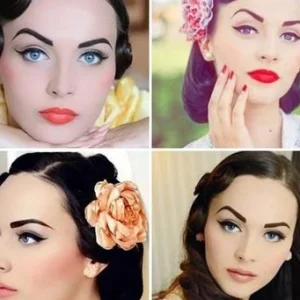How to Choose the Right Foundation Color
Foundation serves as the essential base for makeup, creating a blank canvas that enhances features with eye shadow, blush, and lipstick. Additionally, it acts as a barrier, preventing the skin’s natural oils from breaking down makeup. Given that foundation covers the largest area of the face, achieving a seamless blend with your skin tone is crucial.
Makeup Foundations for Different Skin Types
Before purchasing foundation, it’s important to consider two key factors: your skin type and the foundation’s formulation.
- Oily Skin: For those with oily skin prone to shine, an oil-free foundation is recommended. This type of formulation helps control excess oil production and typically includes powder particles to absorb any excess shine.
- Normal Skin: Individuals with normal skin can use a variety of formulations. Liquid foundation provides adequate coverage without appearing heavy or cakey.
- Dry Skin: Dry skin requires foundations infused with extra moisturizers to maintain hydration and prevent the skin from absorbing the makeup. Cream formulations are particularly beneficial as they offer longer-lasting hydration.
Selecting the Right Foundation Color
The optimal time to select a foundation shade is when your skin is at its most natural tone. Avoid testing shades immediately after a holiday or post self-tanning, as your skin tone may be altered. The best application site for testing foundation is along the jawline.
Foundation colors generally fall into two categories:
- Yellow Tones: Commonly found in Asian, sallow, and darker skin types.
- Pink Tones: Typically seen in fair skin.
Selecting a foundation that matches your skin’s undertone is essential for achieving a natural look. A mismatch can result in makeup that does not blend seamlessly, regardless of application technique.
Applying Makeup Foundations
- Oily Skin: For oily skin, apply oil-free foundations quickly, as they dry rapidly. Use clean fingers to apply small amounts to areas requiring coverage, working one section at a time.
- Normal Skin: For normal skin, the choice between cream-to-powder, liquid, or powder foundation can impact application time. Cream-to-powder formulations are best applied with a sponge, starting at the center of the face and blending outward. Liquid foundation appears most natural when applied with a foundation brush, ensuring to use less product around the eye area. Powder or mineral foundation can be applied with a large brush, providing a quick application without sacrificing quality.
- Dry Skin: Cream foundations work well on dry skin, offering excellent blendability. Focus on covering areas that need attention while leaving clearer sections bare. This makes color matching even more critical for achieving a flawless finish.



